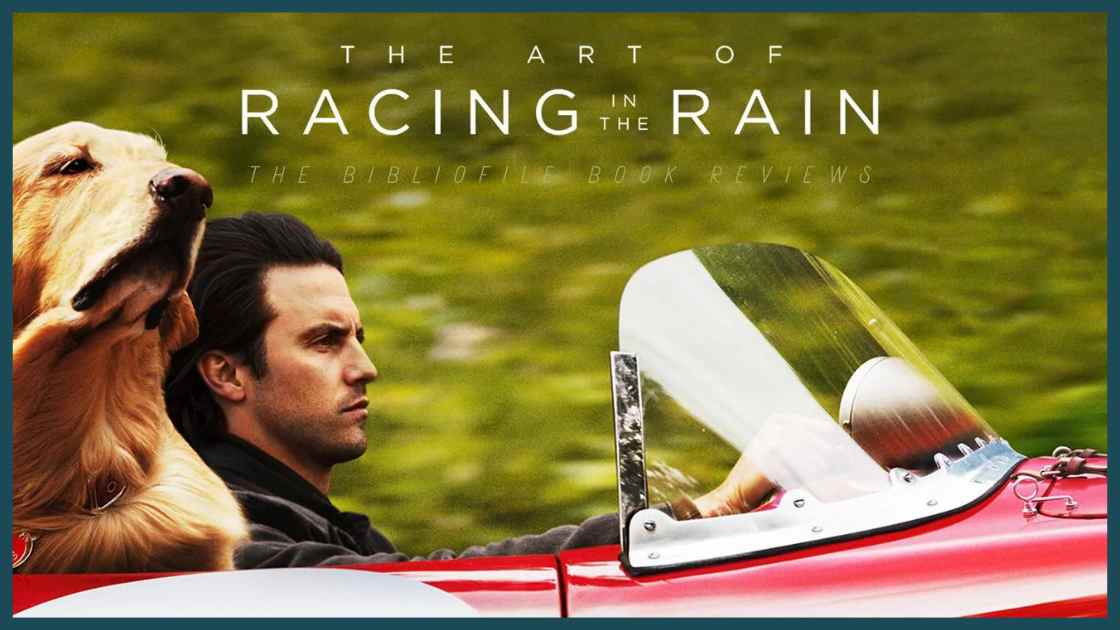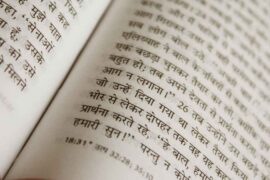Buckle up, folks, as we go on a wild adventure through the pages of Garth Stein’s “The Art of Racing in the Rain.” This remarkable story has left tire-tracks on my heart as it happens to be one of my favourites, merging the thrill of racing with the profound essence of human connection. Join me as we traverse the twists and turns of an incredible story that delves not only into the art of racing, but also into the art of living. Stein’s narrative takes us into a world where speed and emotion meet, providing a remarkable reading experience, much like a well-tuned engine.
Consider a rain-soaked racetrack, where the noise of motors is drowned out by the repetitive pattering of droplets. Consider this moment to be the canvas upon which the complicated story of “The Art of Racing in the Rain” unfolds. As I reflect on a year of literary research, this work drew me in with promises of adrenaline-fueled excitement and emotional outpourings. So buckle in, because we’re not just spectators in these pages, but active participants in a story that combines the thrill of racing with the unpredictable storm of life.
Part 1: Racing Through Life
The story is told through the smart and insightful narration of Enzo, a Labrador retriever with the soul of a philosopher. Enzo is more than just a canine companion; he is a silent witness to his owner, Denny Swift, a race car racer. The racetrack, it becomes evident as the story progresses, acts as a metaphor for the wider race of life.
Enzo’s distinct viewpoint provides readers with a new prism through which to examine the human experience. “The Art of Racing in the Rain” challenges us to consider the interconnectivity of our own travels, from the excitement of the racetrack to the intricacies of human relationships.
Part 2: Navigating the Curves of Fate
The novel’s investigation of fate and the unpredictable twists and turns that life throws at us is one of its most captivating parts. Denny experiences a number of problems, ranging from job setbacks to personal losses, that match the unpredictable nature of a racecourse. Stein expertly weaves these difficulties throughout the story, creating anguished and sympathetic tapestry of life’s ups and downs.
As a reader, I became emotionally immersed in Denny’s path, feeling the heartbreak of defeats as well as the delight of achievements. The narrative serves as a metaphorical rest stop, forcing us to examine our own endurance in the face of adversity.
Part 3: The Power of Relationships
The investigation of relationships lies at the heart of “The Art of Racing in the Rain” – the engine that propels the tale forward. Denny’s relationship with his dog Enzo, his troubled marriage, and the mentorship he finds in his daughter all serve as emotional focal points. Stein depicts the subtleties of love, devotion, and sacrifice in these relationships with depth.s
Enzo’s point of view lends intensity to the investigation of human connections. His observations on the nuances of body language, the power of touch, and the unwritten language between humans and their pets are profoundly moving. Readers are reminded of the enormous impact animals may have on our lives via Enzo’s eyes.
Part 4: The Symphony of Language
Garth Stein’s writing style is an emotional symphony, with each note resonating with the reader’s soul. The narration is enhanced by the employment of Enzo as the narrator. Enzo’s voice is both mature and innocent, creating a contrast that touches the heart.
Racing metaphors litter the work, not only adding authenticity to the plot but also serving as insightful reflections on life’s journey. Stein’s text exemplifies the notion that language, like racing, is an art form requiring accuracy, talent, and a touch of poetry.
Part 5: A Reflection on One Year
As I reflect on my first year as a writer, “The Art of Racing in the Rain” stands out as a testament to the transformational power of storytelling. The novel is more than just a racing story; it is a celebration of the human spirit and the unwavering determination to negotiate the track of life.
Literature has become my medium for research, self-discovery, and empathy during the last year. “The Art of Racing in the Rain” is an example of the magic that occurs when words on a page transcend their form and become a vehicle for emotional connection.
Final Thoughts
As we relax off the literary gas pedal and approach the last pages of Garth Stein’s “The Art of Racing in the Rain,” the resonance of Garth Stein’s story remains like the smell of burnt rubber on a racetrack. The finish line is more than just the end of a story; it’s a symbol of the transforming trip we’ve walked with Denny, Enzo, and the rest of the ensemble. This novel isn’t just a pit break in my creative journey; it’s a watershed moment in which emotions have been refuelled, perspectives have been realigned, and the contours of the human experience have been negotiated with the competence of a seasoned racer.
Just as Denny Swift navigates the unpredictability of life, we, the readers, have navigated the emotional highs and lows of this narrative rollercoaster. The closing chapters offer an invitation to reflect on the miles travelled, lessons acquired, and emotional pit stops that have shaped us. Stein’s writing is a participatory experience that demands our attention, challenges our assumptions, and rewards us with a strong sense of connection to the characters and, by extension, to the universal human predicament.
“The Art of Racing in the Rain” stands as a tribute to the eternal power of storytelling as I coast across the finish line of my literary race. It’s a reminder that, like a well-maintained racing car, a well-crafted narrative has the ability to move us not just from point A to point B, but from one emotional landscape to another. So, let us appreciate the afterglow of this literary voyage, take a deep breath in the pit of emotions, and recognize that, like the characters we’ve come to love, we’ve crossed a finish line, permanently altered by the artistry of words and the resonance of a well-told tale.




